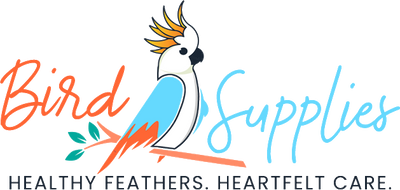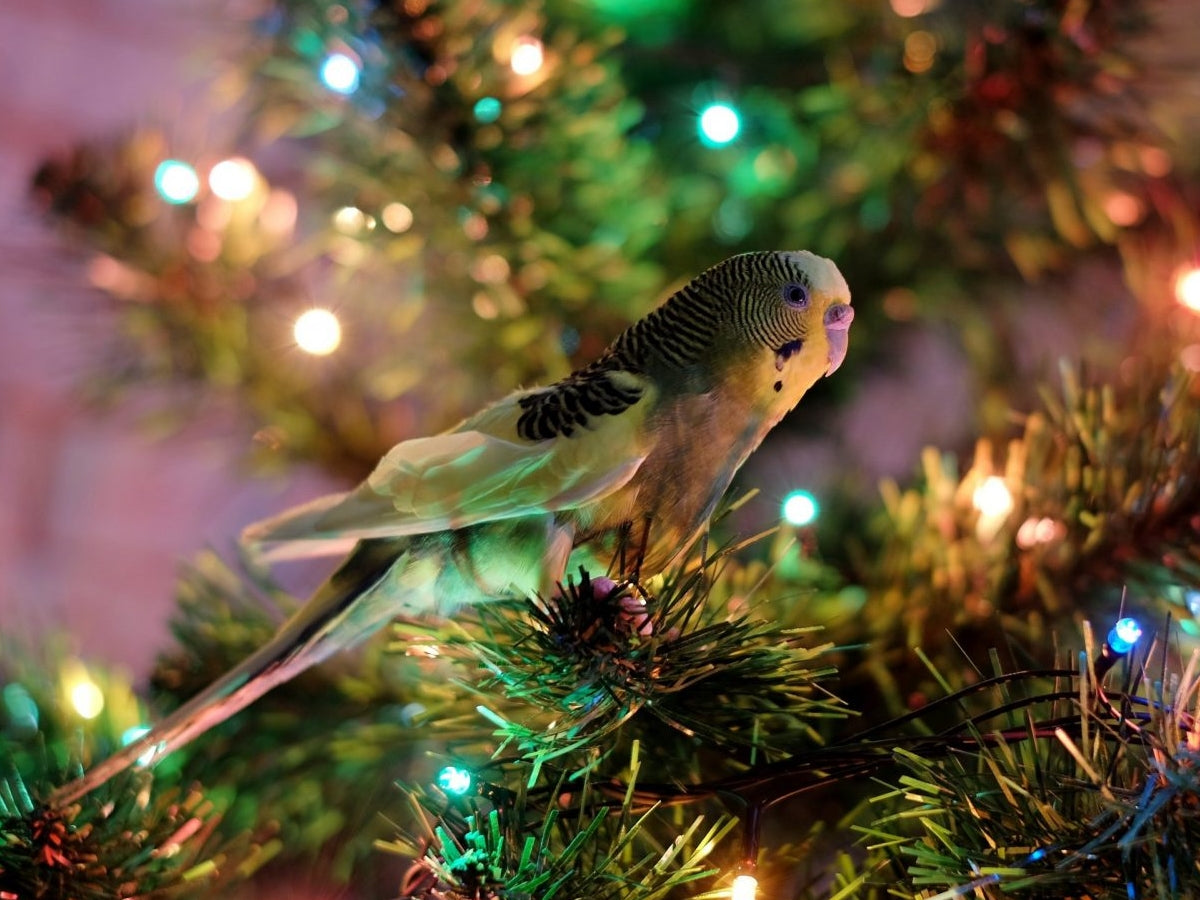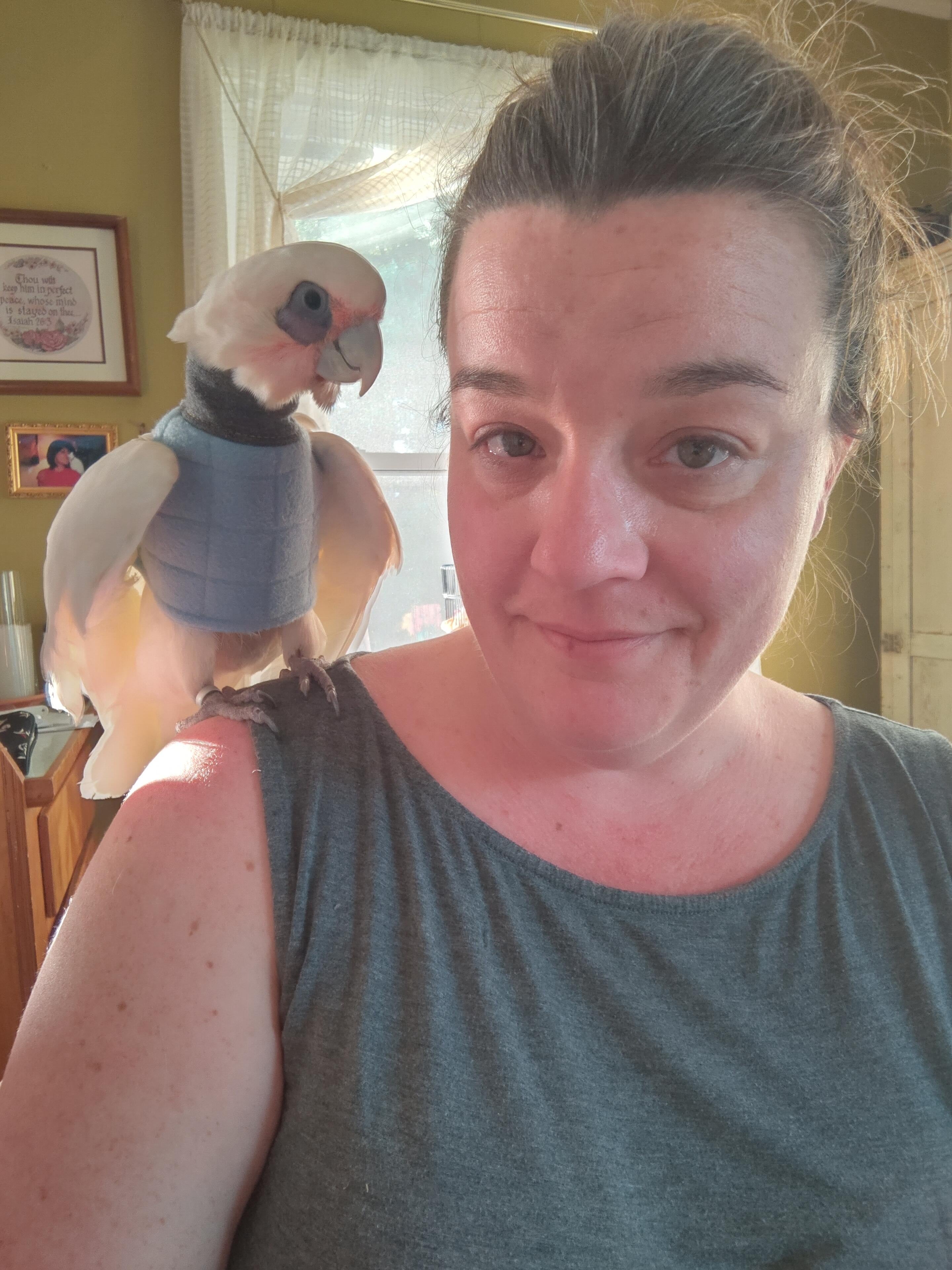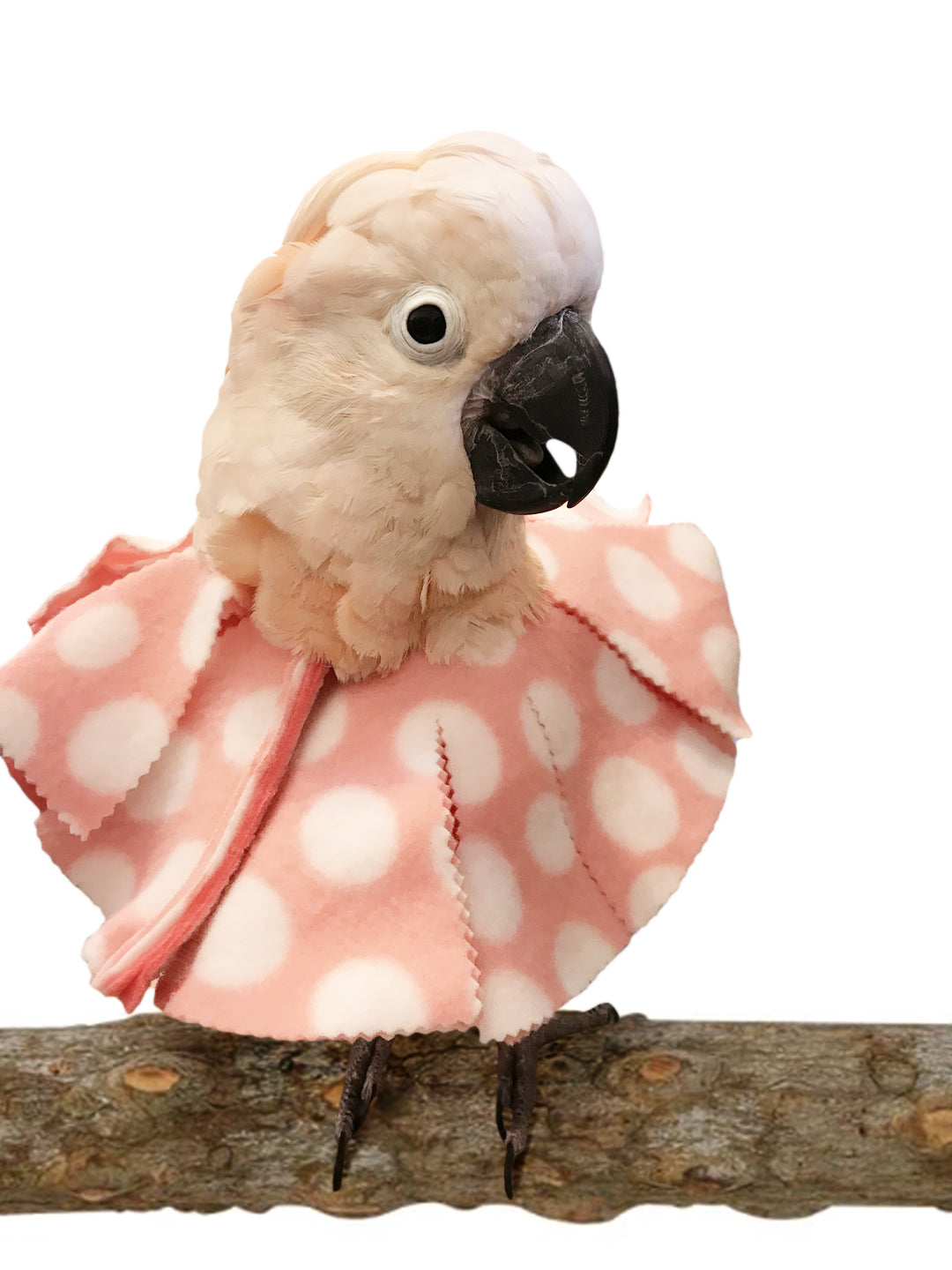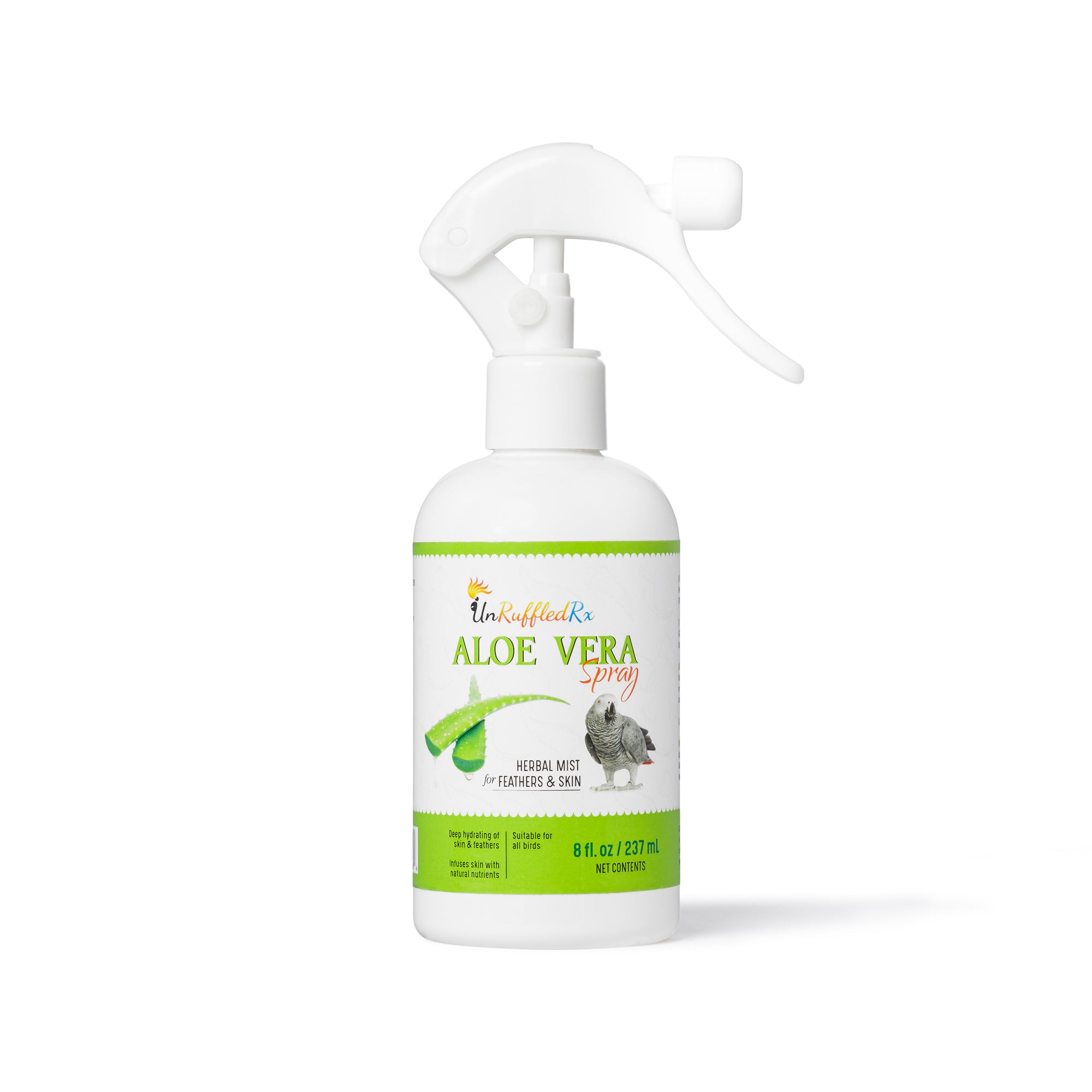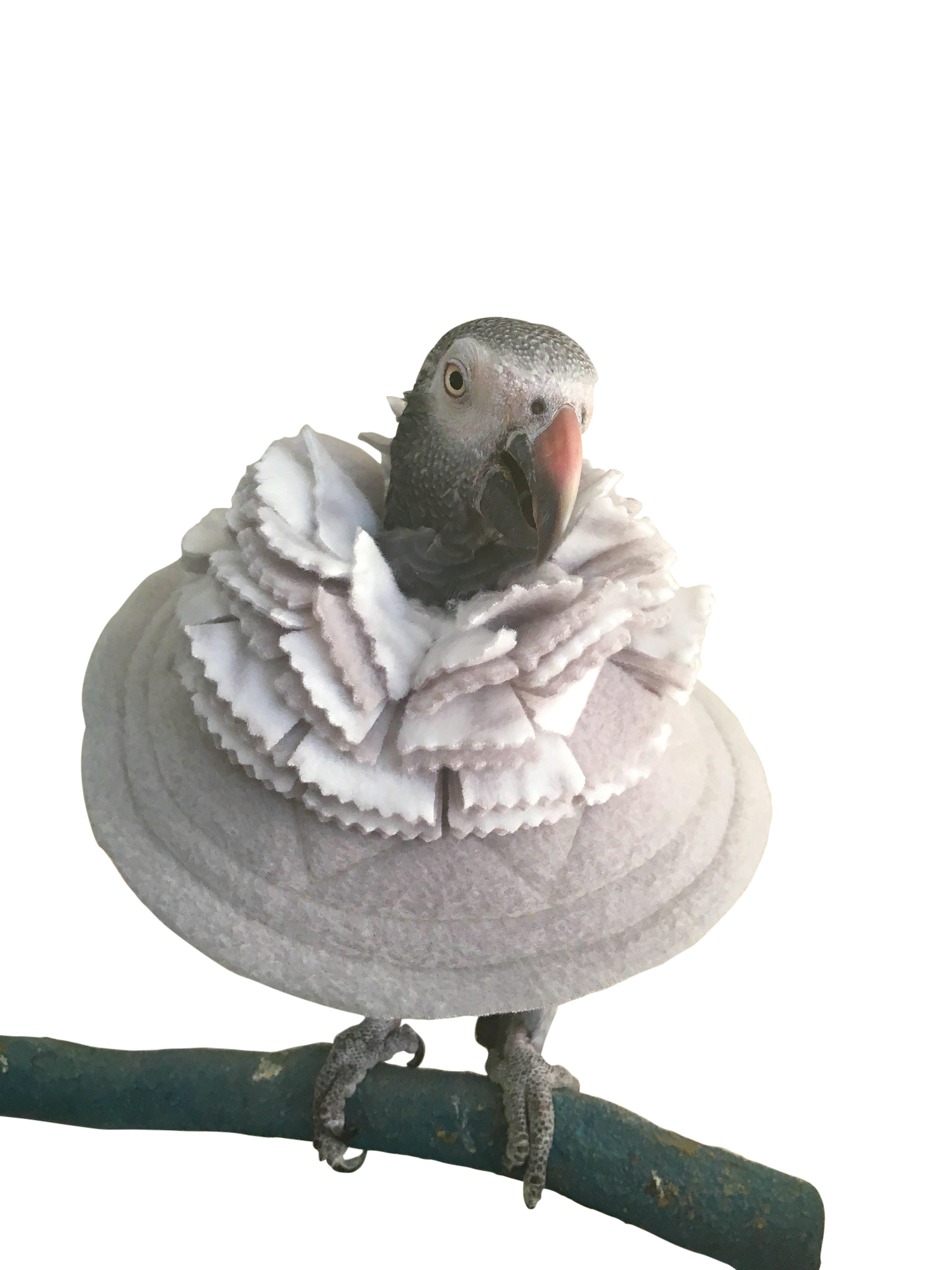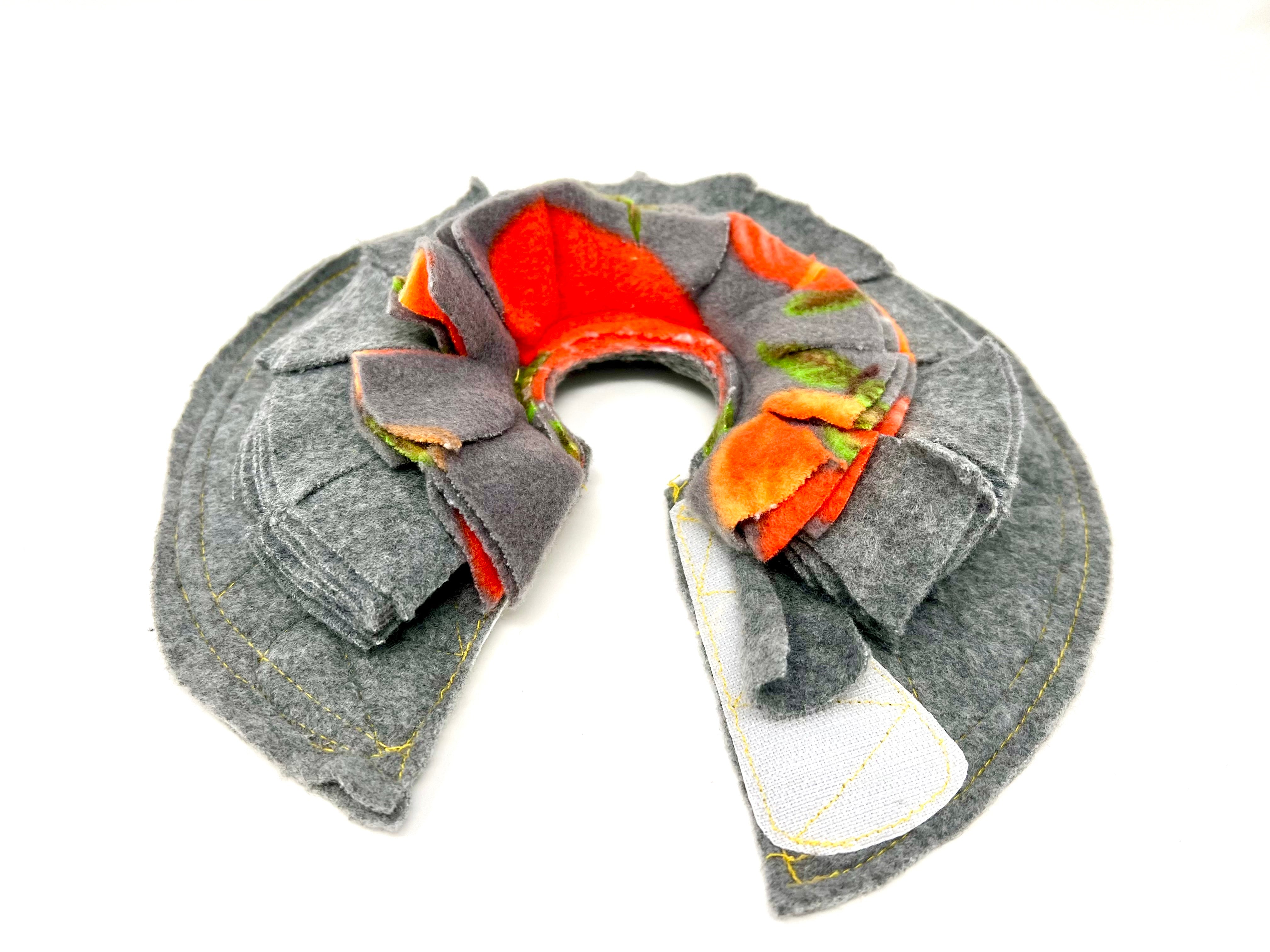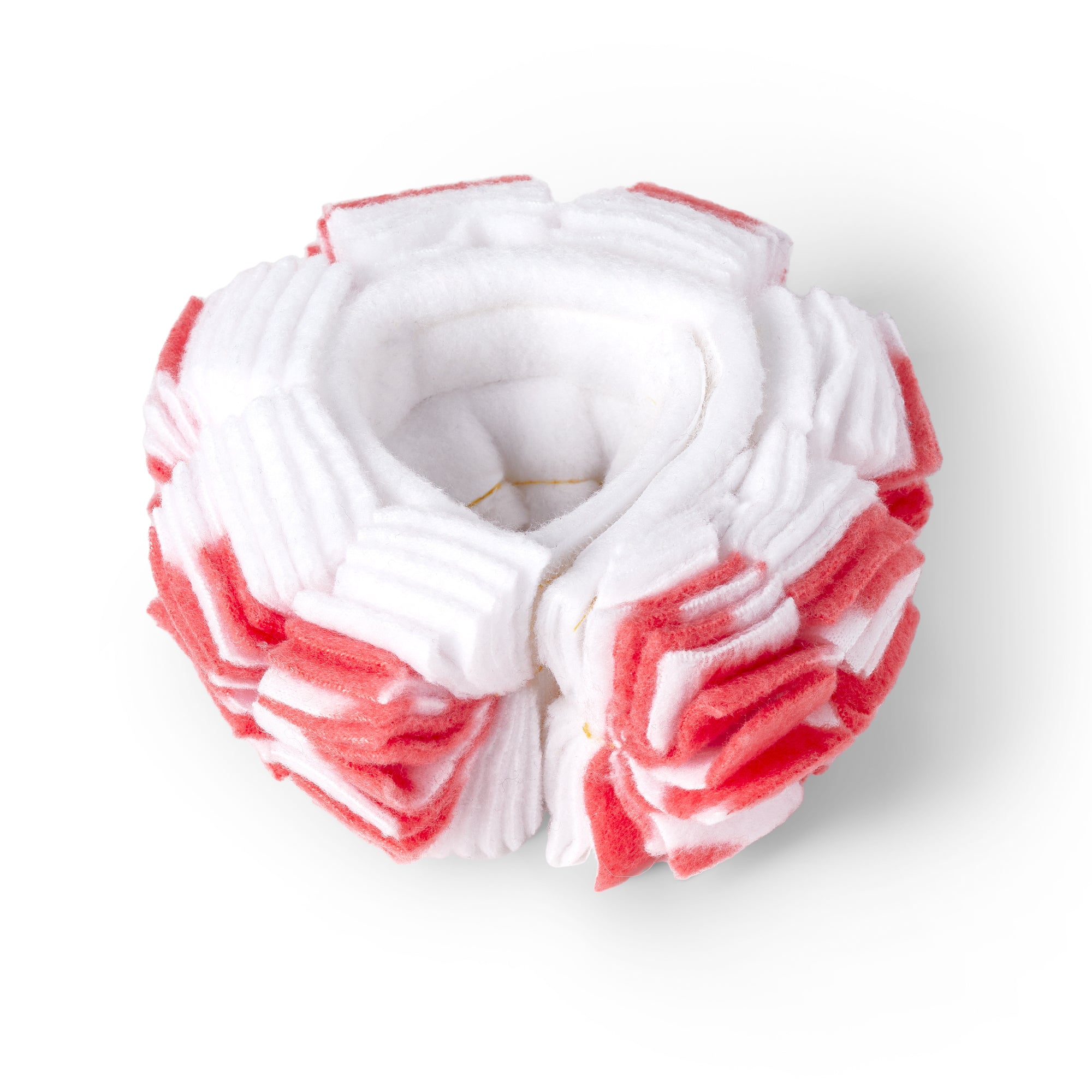Table of Contents
- What is preening in birds?
- Why is preening so important for our pet birds?
- How do birds learn to preen?
- What happens when a hand-fed bird never learns to preen?
- What medical factors cause over preening in birds
- What is the difference between preening and plucking?
- How can I support my over-preening bird?
Learn about bird preening! Birds naturally groom themselves to stay healthy. This blog explores why preening is crucial, how birds learn it, and what to do if they over preen. Understanding this helps keep your bird happy and well.
Let’s fly right in!
What is preening in birds?
Bird preening is when birds clean and groom their feathers by using their beaks to remove dirt, broken barbs, and debris. It is the process of quickly realigning the barbs and barbules on each feather. Preening helps our birds stay healthy and maintain their ability to fly smoothly. It's a natural behavior that birds instinctively do to take care of themselves.
After all, a bird is reliant on its feathers to fly to safety and to get to food sources. Birds spend a lot of their time preening themselves--in fact; you’ve probably observed a bird preening, even if you don’t have one yet.
Feathers are complex. Here is what each feather looks like:

Anatomy of a feather (Image via Birdtricks.com)
Think of preening as a grooming activity. With 2,000 or more feathers, that’s a lot of work! That’s why you observe birds preening so much of the time.
On average, a parrot's body may have anywhere from 2,000 to 8,000 feathers, depending on the species and size of the bird. This includes contour feathers, flight feathers, down feathers, and semiplumes, all of which contribute to their beautiful plumage. |
When observing your feathered friend's grooming habits, there are key differences between preening and plucking to keep in mind. Preening is like a meticulous spa session for birds, where they swiftly move from one feather to another, ensuring each is in perfect alignment. You'll notice them attentively tending to their entire body, from head to tail, with a focused yet relaxed demeanor. Additionally, the bird regularly accesses its preening gland.
On the other hand, plucking or picking is more focused and targeted. Birds experiencing discomfort or irritation may fixate on specific areas, such as their chest or wings, exhibiting repetitive and sometimes frantic behavior in those spots. So, if your bird is calmly grooming all over versus obsessively focusing on one area, it's a visual clue to differentiate between healthy preening and potential plucking concerns. 🐦✨

https://vcahospitals.com/know-your-pet/preening-or-uropygial-gland-in-birds
The Uropygial ( or preening gland) in an important part of the preening process. This gland is located at the base of the bird’s tail and looks like a small nipple-like papilla. It secretes an oily (somewhat waxy) substance that helps keep the feathers flexible and coats them with a waterproof layer. Otherwise, feathers would get brittle and break easily.
While preening, the bird gathers oil from its preening gland, which it then spreads across each feather, nourishing and moisturizing them. This process leaves the feathers looking vibrant and feeling supple.
| Preening | Plucking |
|---|---|
| ✓ The bird regularly accesses the preening gland. | ✓ The bird rarely accesses the preening gland. |
| ✓ Birds swiftly move from one feather to another during preening. | ✓ Plucking is more obsessive and targeted to small areas of the body. |
| ✓ Attentive grooming of the entire body from head to tail. | ✓ Birds experiencing discomfort may fixate on specific areas. |
| ✓ Focused yet relaxed demeanor during preening. | ✓ Exhibits repetitive and sometimes frantic behavior in those spots. |
Why is preening so important for our pet birds?
Here are a few reasons why bird preening is crucial for our pets:
- Bird preening helps to maintain your pets feather quality, and supports exercise, especially bird flight training
- Aligns bird feathers so that all feathers work together.
- Most bird feathers are water-proofed with preening oils each day.
- Bird preening helps to remove sheaths from newly grown feathers.
- Clean, well aligned feathers insulate the bird from cold and heat.
- Healthy, well-maintained feathers make it easier to attract a mate.
How do birds learn to preen?
Parrot parents often preen their young. Preening is an important aspect of parental care in birds, including parrots. Parents help keep their chicks' feathers clean, well-groomed, and in good condition by gently preening them. This behavior not only helps with hygiene but also strengthens the bond between parent and offspring.
Pretty soon birds start practicing preening themselves. Over time, they become more skilled at preening, refining their technique and perfectly aligning each feather on their body.
What happens when a hand-fed bird never learns to preen?
Some hand-fed birds that have been pulled from the nest too early don't learn to properly preen. They may engage in over preening or under preening.
Over preening is when the bird takes on an almost obsessive approach to caring for its feathers. It spends an inordinate amount of time on each feather and almost digs into its body. This may be a sign of an overly anxious bird. I'll talk more about this in a bit.
Under preening is when the bird is disinterested in its feathers. It's disinterested in self-care. Either one of these conditions causes the bird to look tattered and ill. Under preening may be a sign of a depressed or ill bird. If this situation occurs, you'd want to take the bird into the vet for an exam.
Introducing the concept of preening to a new or young bird
In the first stage of the Misting & Preening process, we're focusing on laying the foundation for essential grooming skills in our new pets. These skills are typically learned from their parents or caretakers in the wild. By carefully preening our pets ourselves, we're teaching them the basics of how to groom and care for their feathers, a skill that's crucial for their overall well-being and development.
To start this process, we mimic the natural preening experience that chicks would have with their parents. This includes using a warm, damp towel to soften their feathers and making the preening experience gentle and comforting. By introducing these practices early on, we're helping our pets become accustomed to proper grooming techniques and setting them up for a lifetime of healthy self-preening habits.
Introducing misting and a basking light
Encourage your young bird to preen by misting them gently and providing a basking light. The misting and warm light help create a natural environment for preening and exercise. If other birds are present in the home, make it a flock-like activity to make it more enjoyable and natural.
Playing music and acting enthusiastic can also engage the new bird and make the preening experience more enjoyable for them. This interactive approach not only promotes healthy grooming habits but also strengthens the bond between you and your feathered friend.
If your bird isn't enjoying the misting, examine if they are experiencing a health issue that may be causing discomfort.
Monitoring and encouraging preening and socialization
Socialization and preening with younger birds should be monitored, encouraged, and rewarded with praise and nurturing. It's important to continue encouraging self-preening, especially after misting activities, as this indicates the bird's comfort and likely good health. This nurturing approach fosters a positive environment for your bird's development and well-being.
What medical factors cause over preening in birds?
Disclaimer: While this information provides valuable insights into factors contributing to over preening in birds, it's essential to remember that each bird is unique. If you notice any changes in your bird's grooming behaviors or have concerns about their health, it's highly recommended to seek professional advice from an avian veterinarian.
Infections: Infections such as feather mites or fungal infections can cause a bird to over-preen as they attempt to alleviate discomfort or irritation. Overpreening may also occur in response to skin conditions like dermatitis or allergic reactions, prompting birds to excessively groom affected areas. Identifying and treating the underlying infection is crucial to resolving the overpreening behavior and restoring the bird's comfort and well-being.
Injury / aggressive cage mates: Injuries or aggression from cage mates can lead to over-preening in birds, as they may groom excessively in response to stress or pain. Feather plucking may also occur as a coping mechanism, especially in birds subjected to aggressive behavior from their companions.
Diet: An improper or poor diet can contribute to over-preening in birds due to nutritional deficiencies. For example, a lack of essential fatty acids or vitamins can lead to dry, itchy skin and dull feathers, prompting birds to excessively groom in an attempt to alleviate discomfort. Additionally, an unbalanced diet may weaken the bird's immune system, making them more susceptible to infections that can manifest as skin irritations, further exacerbating the urge to over-preen. It's crucial to provide birds with a well-rounded and nutritionally complete diet to support healthy skin and feather condition, reducing the likelihood of over-preening behaviors.
Parasites: Parasites like feather mites or lice can contribute to over preening in birds as they cause irritation and discomfort to the skin and feathers. In an attempt to remove or alleviate the itching caused by these parasites, birds may engage in excessive grooming, leading to over preening behaviors. Discuss parasite prevention with your vet.
Liver Disease: Liver disease can lead to over-preening in birds by causing systemic inflammation and metabolic imbalances. This can result in discomfort or itching in the skin and feathers, prompting affected birds to engage in excessive grooming to alleviate the associated discomfort.
Hormonal behavior: Hormonal behavior in birds, particularly during breeding seasons or times of hormonal imbalance, can lead to overpreening. This is often seen in birds exhibiting nesting behaviors or undergoing hormonal changes related to mating. The increased levels of hormones can cause heightened sensitivity and stress, prompting birds to groom excessively as a coping mechanism or in response to hormonal triggers.
Socialization & Preening
Socialization and preening with younger chicks should be monitored, encouraged, and rewarded with praise and nurturing. It's important to continue encouraging self-preening, especially after misting activities, as this indicates the bird's comfort and likely good health. This nurturing approach fosters a positive environment for your bird's development and well-being.
What is the difference between preening and plucking?
Over-preening refers to excessive grooming behaviors where a bird spends an unusually long time grooming its feathers. This can sometimes lead to feather damage or bare patches due to over-grooming. The affected feathers appear tattered and sometimes the feather shaft is damaged.
On the other hand, feather plucking, also known as feather picking, involves the bird deliberately pulling out its feathers, resulting in bald spots or patches of missing feathers. While both behaviors can indicate underlying issues, such as those described above, they are distinct in terms of the intensity and purpose of the grooming behavior.
How Can I Support My Over-preening Bird?
-
Provide foraging activities: Foraging toys make excellent tools to help keep your bird mentally occupied throughout the day. The bird channels all of its energy towards foraging and ‘forgets’ to over-preen.
-
Mist your bird: Incorporate misting into your daily routine to encourage healthy preening in your bird. Avoid drafts or chilly environments when misting, as this can be uncomfortable for your bird. Use a fine mist sprayer with lukewarm water to lightly spray your bird, helping to prevent over preening. Never spray your bird as punishment, but make it a fun activity.
-
Improve diet, enrichment, socialization, and other parrot husbandry: Providing a balanced diet, engaging enrichment activities, regular socialization, and proper husbandry practices all contribute to a healthy and happy bird, reducing the likelihood of over preening behaviors.
- Reinforce desired behaviors: Use positive reinforcement techniques such as praise, treats, or clicker training to encourage desired behaviors and discourage over preening. Consistency and patience are key in reinforcing positive behaviors in your bird.
In conclusion...
In conclusion, preening is a natural grooming behavior in birds that is essential for maintaining healthy feathers, regulating body temperature, and promoting social interactions. Birds learn to preen through observation and practice, and hand-fed birds that miss this skill may experience feather and skin problems.
Over preening in birds can be caused by medical factors such as skin infections, parasites, or hormonal imbalances. Understanding the difference between preening and plucking is crucial for identifying and addressing over preening behaviors, and supporting an over-preening bird involves providing enrichment, misting, improving diet, and reinforcing positive behaviors.
Related Posts:
7 Common causes of bird scratching and what to do about it
How to mist a bird
Why do my birds feathers look so bad?
References:
Hari. (n.d.). Misting & Preening Education. HARI. https://hari.ca/avian-care/misting-preening-education/#:~:text=Birds%20that%20preen%20themselves%20excessively,was%20overly%20engaged%20in%20preening.
Merck Veterinary Manual. (n.d.). Skin and feather disorders of pet birds. Merck Veterinary Manual. https://www.merckvetmanual.com/bird-owners/disorders-and-diseases-of-birds/skin-and-feather-disorders-of-pet-birds
Robinson, I. (2009). Seabirds. In T. N. Tully Jr, G. M. Dorrestein, & J. E. Cooper (Eds.), Handbook of Avian Medicine (2nd ed., pp. 377-403).
Seibert, L.M. Feather-picking Disorders in pet birds. Manual of Parrot Behavior edited by Andrew U. Luescher, Blackwell Publishing, 2006, Ames, Iowa,pp. 255 - 266.
Diane Burroughs, LCSW is a licensed psychotherapist trained in ABA therapy techniques. She specializes in avian anxiety disorders and is certified in Nutrition For Mental Health. Diane has written a number of bird behavior books and she offers behavior consultations. She's developed a range of UnRuffledRx Science-backed Parrot Wellness Supplies.
Diane's products have been featured in the Journal of Avian Medicine and Surgery and at Exoticscon, a conference for exotic pet veterinarians. Her bird collars & supplements are stocked in avian vet clinics and bird stores throughout the US. With over 30 years in the field of behavior, Diane has created thousands of successful individualized behavior plans that help pets thrive.
TAGS: #BirdPreening #BirdsPreeningEachOther
SHARING IS CARING! PLEASE SHARE ON YOUR FAVORITE SOCIAL MEDIA NOW!
